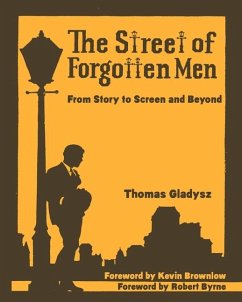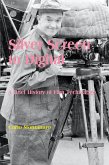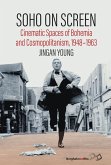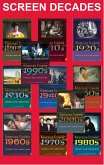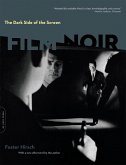The Street of Forgotten Men: From Story to Screen and Beyond is a deep dive into the history of a single film - its literary source, its making, exhibition history, critical reception, and, most surprising of all, its little known legacy. Few film titles become a catchphrase, let alone a catchphrase which remained in use for half-a-century and resonated throughout American culture. The Street of Forgotten Men (1925) is one such film. This provocative stab at realism was described as "strange" and "startling" at the time of its release. The Street of Forgotten Men was directed by Herbert Brenon, who is best known for Peter Pan, The Great Gatsby, Beau Geste, Laugh, Clown, Laugh and other early classics. The film was shot by Harold Rosson, one of the great cinematographers whose credits include Gone with the Wind and Singin' in the Rain. And, it features a stellar cast (Percy Marmont, Mary Brian, Neil Hamilton) which includes a future screen legend at the very beginning of her career (Louise Brooks). The Street of Forgotten Men: From Story to Screen and Beyond tells the story of the film in rich, historical detail. As this book shows, this forgotten gem is exemplary of film making & film culture in the mid-1920s. Along with vintage clippings and unusual images - including rare production stills and location shots, this new book features all manner of historical documents including the short story on which the film was based, the scenario, a rare French fictionalization, newspaper advertisements, lobby cards, posters, and more. Among the book's many revelations: -- Multiple accounts of the making of the film - suggesting what it was like on the set of a silent film. -- A survey of the film's many reviews, including one by the Pulitzer Prize winning poet Carl Sandburg, another by a contributor to Weird Tales, and another by Catholic icon Dorothy Day, a candidate for sainthood. -- Newly revealed identities of some of the film's bit players - a noted journalist, a future screenwriter, a soon to be famous actress, and a world champion boxer - which include accounts of their working on the film. There is also the story of Lassie's role in the film (no, not that Lassie, the first screen Lassie). -- A look at the music associated with this silent film: the music played on set, the music depicted in the film, the music heard before the film was shown, and the music played to accompany the film itself (including the rare Paramount cue sheet and an alternative score). >The Street of Forgotten Men: From Story to Screen and Beyond includes dozens of illustrations and images and features two forewords; one is by noted film preservationist Robert Byrne, whose restoration of The Street of Forgotten Men saved it from undeserving obscurity. The other, by acclaimed film historian Kevin Brownlow, is an appreciation of Herbert Brenon which reveals little known details about the movie drawn, in part, from his correspondence with Louise Brooks.
Hinweis: Dieser Artikel kann nur an eine deutsche Lieferadresse ausgeliefert werden.
Hinweis: Dieser Artikel kann nur an eine deutsche Lieferadresse ausgeliefert werden.

